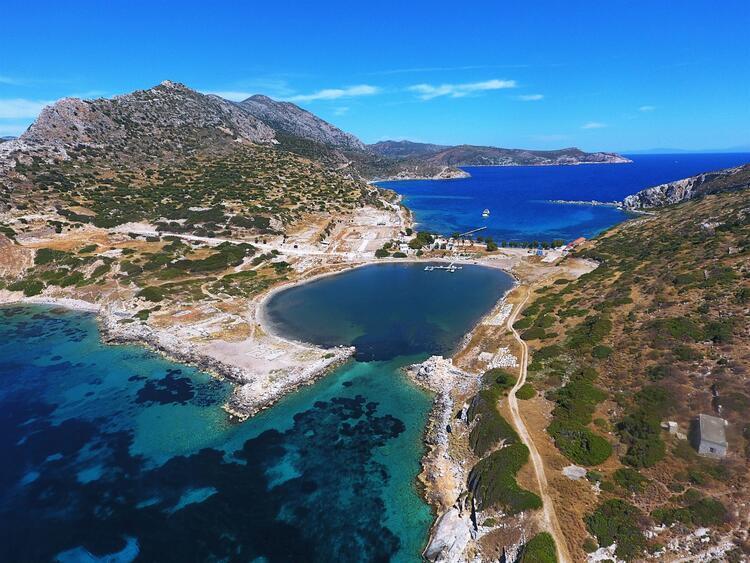
The ancient city of Knidos, located in the Datça district of Turkey’s leading tourist town in the west, Muğla, welcomed 40,000 visitors in two and a half months.
The 2,600-year-old ancient city, which attracts tourists with its magnificent buildings that defy centuries, is flooded by thousands of local and foreign tourists every year, for its colonnaded harbor street, agora, two ancient theaters and two harbors.
Knidos opened its doors on June 15 this year after the implementation of the new type of COVID-19 measures and is again hosting visitors in the period of “controlled social life” and “new normal.”
Due to its special location, as the ancient city is accessible by both land and sea is also one of the reasons that attract tourists.
Head of the Knidos excavations and Selçuk University Archaeology Department member Professor Ertekin Doksanaltı told the state-run Anadolu Agency that the region where they continued to conduct excavations was the most important culture, art and scientific center of the ancient period.
Stating that Knidos is one of the strategic points in the ancient period, Doksanaltı said, “This is at a point that we can call the gate of the Aegean, at the intersection of the Aegean and the Mediterranean. Thanks to this geographical feature, the city has two ports between the island and the mainland.”
Unlike many other cities in the Mediterranean basin, Knidos stands out in the field of science, art and culture outside the military field, he said, adding,” The architect of the Lighthouse in Alexandria, considered one of the seven wonders of the ancient period, is Sostratus. Knidos, which is also a neighbor of Kos Island, has a medical school that is rival or even older than Hippocrates Medical School. The doctors of Knidos served in many places in the Mediterranean Basin in ancient times.”
Pointing out that its location is an important chance in the development of Knidos, Doksanaltı said that western travelers and researchers who came to the ancient city in the 18th and 19th centuries damaged the ancient city with the excavations they carried out to bring artifacts to their countries, museums or collections.
Stating that they feel sorry that many works from Knidos are abroad, Doksanaltı said, “The artifacts obtained during these excavations, which were far from archaeological and scientific methods most of the time, have been taken to museums abroad. The most striking among these are the excavations carried out by the Englishman Charles Newton between 1857 and 1859. The artifacts obtained during these excavations constitute the most beautiful and precious collections of the British Museum in England today. After the Lion of Knidos was taken from here, it welcomes visitors in the entrance courtyard of the British Museum today.”
Stating that the excavations started in the year 1988 that were carried out by Turkish scientists in Knidos, have been continuing under his supervision since 2012, Doksanaltı said that they focused on restoration.
Stating that instead of opening new excavation areas, they focused on closing the excavation pits that caused the city to appear from its ruins and repairing the ruined artifacts, Doksanaltı said that especially. in recent years, the port street, one of the famous streets of Knidos, was unearthed and shown to visitors.
Doksanaltı said that the artifacts unearthed were exhibited in the Marmaris Museum and that transportation to the city was carried out especially by sea. For sightseeing tours, boats and private yachts were anchored in Knidos Port.
Stating that the number of visitors to the city has gained increasing momentum, Doksanaltı said, “Western visitors especially show great interest in the city. However, there has been a big increase in the number of local visitors in recent years. Despite the pandemic process this year, approximately 40,000 people have come to the city since June 15 and had the opportunity to see the buildings here. This shows that the interest of visitors is increasing every year, along with the ongoing excavations and unearthed monuments.”